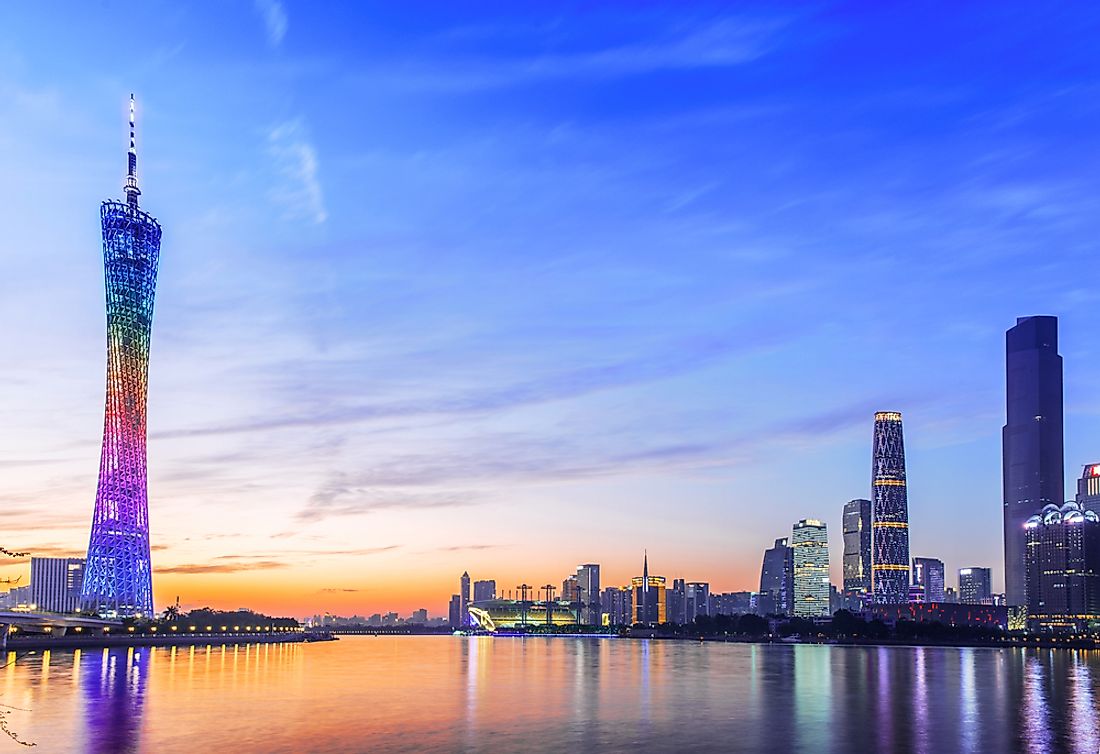What is the Capital Of Guangdong Province?

Guangdong is a province in China, located on the coast of the South China Sea. With an area of 179,800 km2, it is the country's 15th most extensive province and its estimated population of 113,460,000 ranks as the most populous. Guangdong is also the world’s most populous country subdivision outside of South Asia.
Capital of Guangdong Province
Guangzhou serves as the capital of Guangdong Province. Additionally, Guangzhou is one of China’s nine National Central Cities and is also an Alpha global city. The city covers an area of 7,434.4 km2 on both sides of the Pearl River in south-central Guangdong. It is approximately 145 km north of Macau and 120 km north-northwest of Hong Kong. The elevation of the prefecture gradually increases from the coastal area in the south to the mountains in the north. Tiantang Peak, which has an elevation of 1,210 m, is the highest point in the city. Guangzhou experiences a subtropical monsoon climate.
Demographics of Guangzhou
As the capital of China’s most populous province, it is not surprising that Guangzhou has a large population. According to the 2010 census, the city proper was home to 12.78 million individuals and had a population density of approximately 1,800 persons per square kilometer. Guangzhou is a constantly growing city and is part of a large urban agglomeration that has a total population of more than 28 million. The city also has a large floating population of migrant workers who come from other parts of China, Southeast Asia, the Middle East, Europe, and Africa. As a result, Guangzhou is sometimes referred to as the "Capital of the Third World." The majority of the city's population are Han Chinese and speak Cantonese as a first language. Migrants to the city often speak different forms of Mandarin.
History of Guangzhou
Guangzhou’s history dates back more than 2,200 years and served as an important city in the ancient Silk Route. During its history, many empires ruled the region and the city experienced numerous wars, invasions, and rebellions. The name Guangzhou was first used when a prefecture named Guangzhou was established. The city developed and flourished during the rule of the Tang, Song, Ming, and Qing dynasties. In 1746, during the rule of the Qing dynasty, Guangzhou was designated as the capital of the Viceroyalty of Guangdong and Guangxi, and various European countries soon established trade relations with the city. However, internal rebellion and political unrest in the following decades slowed the city's progress, while Shanghai and Hong Kong emerged as leading centers of trade.
At the start of the 20th century, Guangzhou became the main site of Sun Yat-sen’s campaign to overthrow Manchu rule and establish the Chinese Republic. In 1921, Guangzhou was designated as an independent city with its own administration under the nationalist government. Sun Yat-sen’s son became the city's first mayor. In 1954, the city was placed under the rule of Guangdong Province.
Economy of Guangzhou
Guangzhou is the Pearl River Delta’s major hub of commerce and manufacturing. It is also one of the country’s most prosperous cities, with a per capita gross domestic product (GDP) of approximately $22,317 USD. The city hosts Canton Fair, an annual trade fair that is considered to be the largest and oldest in China. The city is also renowned for its Cantonese cuisine, Cantonese sculpture, porcelain, embroidery, and Zhujiang beer. The city's many cultural and historical attractions support a thriving tourist industry. Guangzhou and its surrounding area is also rich in mineral ore that is exploited extensively.











